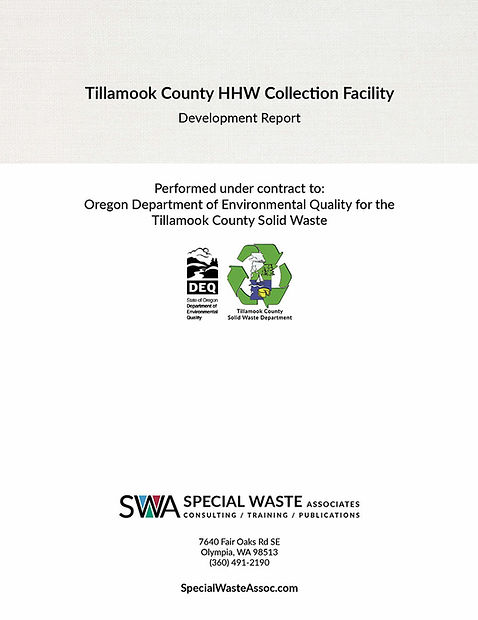
Project Programming
Services to Match Your Project

Project Programming is one of the first steps in deciding the overall parameters of your project. This pre-design step incorporates and documents your goals, policy direction, community needs, historic collection data and patterns, and other analysis to define the approach to successful project implementation. This sets the local context and constraints for the project and guides the design process.

Boulder County, CO
Boulder County's original HHW collection facility had a series of additions, upgrades and improvements, but reached the limits of what it could reasonably manage at its original location. In addition, Boulder County recognized the need to provide VSQG wastes services but there was no capacity at the original site to manage those additional wastes.
SWA performed analysis of the existing operations and historic HHW collection results to set a baseline of typical collected waste streams and operating practices. Programming considerations included moving locations and going from multiple pre-fabricated hazardous materials buildings to a purpose-built all-weather building. Additional objectives included operating more hours, improving ergonomics and ventilation for workers, more efficient materials flow, increased storage, services for small businesses hazardous waste management, design for more processing, repurposing the prefabricated hazardous materials buildings, and emphasis on waste reuse and education.

King County's first permanent HHW collection facility was integreated with the new solid waste and recycling transfer station.

King County's Factoria HHW collection facility.
King County, WA
As a large innovative local solid waste agency, King County Solid Waste Division recognized the need to expand its HHW services from primarily a mobile collection event system, called the WasteMobile, to a combination of collection events and permanent collection facilities. Based on King County’s design and operating lessons learned from their first permanent HHW collection facility, Special Waste Associates was added to the design team to assist with project programming and facility design for the development of their second permanent HHW collection facility.
King County’s objective was to develop an HHW collection facility integrated with the development of a replacement solid waste transfer station serving the south end of the county. King County and its HHW contractor provided SWA their collection event operating data to assess the storage and processing needs of the future HHW facility. The analysis of operating data provided programming criteria used to formulate design options for efficient site and building plans. The project is now in the design phase.

Santa Barbara County, CA
Santa Barbara's HHW collection facility opened in 1993 and the participation by households and businesses increased dramatically from less than 3,000 participants to over 9,000 participants per year. Santa Barbara Public Works Department engaged SWA to help evaluate potential new facility sites. SWA also provided options regarding best practices for equipment, operations, permitting, design features, and typical timelines. Santa Barbara County was also interested in providing a waste reuse area for the community that was unavailable due to space constraints at their current location.
These issues provided the impetus to explore development of a correctly-sized and efficiently-designed replacement facility at a location adjacent to the existing site or at another location An analysis of HHW and CESQG quantities and types was created as the basis for an appropriate space planning scheme for a new collection facility, regardless of location.

Tillamook County, OR
The project development report summarized the results of a site visit and subsequent discussions and analysis regarding the potential development of a new household hazardous waste collection facility at the Tillamook County Transfer Station. The goals of the project were to:
-
Reduce the amount improperly disposed HHW of into landfills, sewers, air, waterways, and otherwise dumped in the county,
-
Reduce the risks of accidental poisonings during fires in homes,
-
Reduce the fuel loadings in homes from flammable materials,
-
Reduce the risk to fire safety workers from hazardous materials storage.
-
Provide regular, convenient, and cost-effective education and collection considering short-term and long-term costs.
-
Minimizing the environmental and health impacts associated with HHW, and
-
Reduction of liability to the County.
The chosen site was on a steep slope and adjacent to an active transfer station. Historic collection activities were analyzed to determine the proportion of wastes by type to be collected and estimated the anticipated waste storage requirements. This project programming analyses lead to the development of two conceptual designs and ultimately building a new HHW facility at the transfer station.
